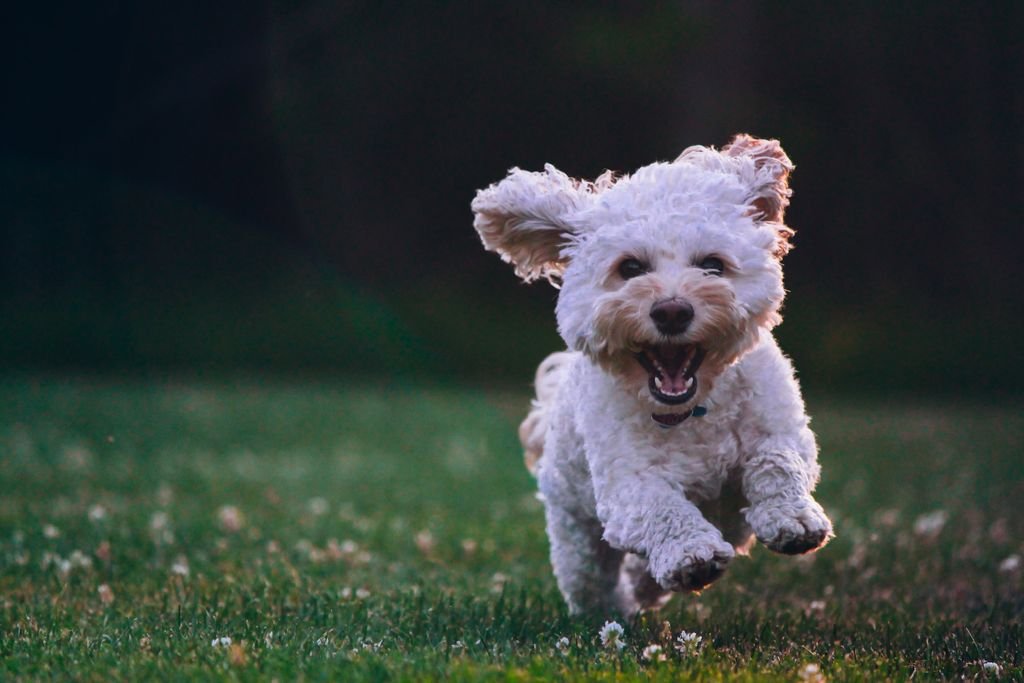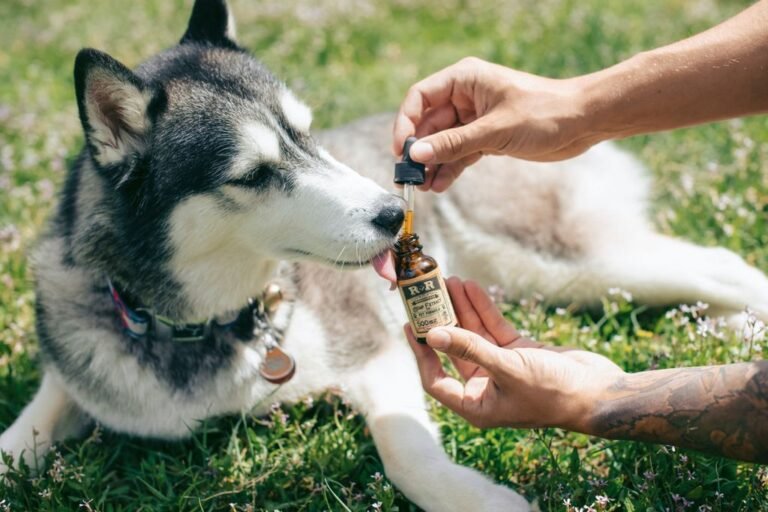Essential Exercise Tips for Every Pet: Keeping Them Fit and Healthy
If you’ve made a New Year’s resolution to get fitter this year, why not get your furry friend in on the fun? Exercise is essential for pets to keep them fit and healthy. It is especially important to adapt the exercise routine to your pet’s needs, taking into consideration their age, breed, and individual needs. In this article, we will explore the importance of exercise for pets, how to choose the right exercise routine, fun activities for pets, safety precautions, and how to incorporate exercise into your pet’s daily routine.
Key Takeaways
- Exercise is essential for pets to maintain their mental and physical health.
- Choose the right exercise routine based on your pet’s age, breed, and individual needs.
- Interactive toys and games can provide mental stimulation for pets.
- Outdoor activities are great for dogs, while indoor exercise ideas are suitable for cats.
- Take safety precautions such as warm-up and cool-down exercises, avoiding overexertion, and considering weather conditions.
Understanding the Importance of Exercise for Pets

Why Exercise is Essential for Pets
Exercise is essential for pets to maintain their mental and physical health. Just like humans, pets need regular exercise to stay fit and prevent health issues. It is important to adapt the exercise routine to your pet’s needs and energy level. Whether it’s going for walks, playing games, or training, keeping your pet active is crucial. No-touch litter box is a great option for cats to exercise their natural instincts. Monitoring your pet’s activity levels is important to ensure they are getting enough exercise and to detect any changes in their behavior or energy levels. If you notice any signs of discomfort or fatigue after exercise, it is important to limit their physical activity and consult with your vet to rule out any underlying health issues.
The Benefits of Regular Exercise for Pets
Regular exercise is essential for keeping your pet healthy and happy. It provides numerous benefits that contribute to their overall well-being. Here are some key advantages of regular exercise for pets:
- Weight control: Regular exercise helps your pet burn extra calories and maintain a healthy weight.
- Joint health: Just like humans, pets can experience stiff joints. Regular motion through exercise can help them stay comfortable and in good shape.
- Digestive and urinary health: Regular exercise helps regulate your pet’s digestive and urinary systems, promoting regularity and preventing discomfort.
- Stress relief: Exercise allows your pet to release pent-up energy and reduce stress levels.
- Training opportunities: Incorporating exercise into your pet’s routine provides valuable training opportunities and helps reinforce good behavior.
- Socialization: Taking your pet for walks or engaging in outdoor activities allows them to interact with other animals and people, promoting socialization skills.
By ensuring your pet gets regular exercise, you are taking an important step towards their overall health and well-being.
Choosing the Right Exercise Routine for Your Pet

Considering Your Pet’s Age and Breed
When it comes to exercise, it’s important to consider your pet’s age and breed. Genetics, nutrition, and quality of care all play a role in how your pet ages. Smaller breeds tend to reach their adolescent phase earlier than larger breeds, who develop more slowly. A small breed dog may be mature by around a year old, while a giant breed can take two years or more to be considered an adult. Every dog is unique, so if you have any concerns about their exercise or nutrition needs, it’s best to consult your vet. Here are some key points to keep in mind:
- Smaller breeds mature faster than larger breeds.
- Consult your vet for personalized advice.
- Consider the specific needs of your pet’s breed.
- Provide appropriate exercise for your pet’s age and size.
Remember, the goal is to keep your pet fit and healthy throughout their life.
Tailoring Exercise to Your Pet’s Individual Needs
When it comes to exercise, every pet is unique and has different needs. Cats, for example, are known for their independent nature and may prefer short bursts of playtime rather than long walks. On the other hand, dogs are generally more active and require regular exercise to keep them happy and healthy. It’s important to consider your pet’s age, breed, and overall health when tailoring their exercise routine. Here are some tips to help you customize your pet’s exercise plan:
-
CATLK: Cats are natural hunters, so incorporating interactive toys and games into their exercise routine can provide mental stimulation and keep them engaged. Try using toys that mimic prey, such as feather wands or laser pointers.
-
For dogs, consider their breed and energy level when choosing activities. High-energy breeds may enjoy running or playing fetch, while smaller or older dogs may prefer shorter walks or gentle playtime.
-
It’s also important to listen to your pet’s cues and adjust the intensity and duration of exercise accordingly. If your pet seems tired or is panting heavily, it’s time to take a break.
-
Remember to always warm up and cool down before and after exercise to prevent injuries. This can include a short walk or gentle stretching.
-
Lastly, be mindful of the weather conditions when exercising outdoors. Hot pavement can burn your pet’s paws, and extreme cold can be dangerous. Choose the right time of day and provide shade and water as needed.
By tailoring exercise to your pet’s individual needs, you can ensure they stay fit, healthy, and happy.
Fun and Engaging Exercise Activities for Pets

Interactive Toys and Games for Mental Stimulation
To keep your cat mentally stimulated and engaged, try incorporating interactive toys and games into their playtime. These toys encourage your cat to run, jump, and chase, mimicking their natural hunting instincts. Laser pointers and feather-teaser toys are especially effective in keeping your cat active and entertained. Additionally, providing vertical spaces like cat trees or shelves allows your cat to climb and jump, providing both physical exercise and mental stimulation. Puzzle feeders and treat-dispensing toys are also great options to challenge your cat’s problem-solving skills while rewarding them with treats. By engaging your cat in these interactive activities, you can ensure they stay mentally sharp and entertained.
Outdoor Activities for Dogs
When you can’t go outside with your dog, there are still plenty of options to help them burn off energy and stay mentally stimulated. Here are some ideas:
-
Indoor walking: Take your dog for a walk inside your home with their harness and leash on. This allows you to practice training and heeling while incorporating movement.
-
Puzzle toys, treat balls, and Kongs: These toys provide mental enrichment for your dog and keep them engaged.
-
Agility course: Set up an agility course in your home using household items like boxes, couch cushions, or buckets as obstacles. This is a fun way to exercise your dog and challenge their active mind.
-
Online classes and videos: Sign up for online classes or watch videos to learn new tricks that you can teach your dog.
-
Rover walker or daycare provider: If you need extra help, you can always rely on a Rover walker or daycare provider to ensure your dog gets their daily exercise.
Remember, finding alternative ways to exercise your dog indoors can be just as beneficial as outdoor activities. It’s important to keep them mentally stimulated and physically active.
Indoor Exercise Ideas for Cats
When it comes to keeping your indoor cat active and healthy, there are several options to consider. Creating a multi-level environment with ramps, walkways, and elevated spots encourages climbing and exploration, which provides an excellent form of cat exercise. Scratching objects are also important for cats, as scratching is a natural behavior. Vertical posts wrapped in sisal rope are a popular choice and certainly provide a better option than your furniture!
If feasible, providing controlled outdoor access can be a great way to exercise indoor cats. Cat-fenced gardens or patios (sometimes known as Catios) can give your cat the thrill of the outside world while ensuring their safety.
In addition to these options, there are other ways to engage your cat in exercise. Puzzle toys and feeders are a fantastic way to stimulate both the mind and body. They mimic the natural hunting instinct, making your cat work for its food. Believe it or not, you can also train your cat! From simple tricks to healthcare-related actions, training can be both fun and practical.
Remember, a user-friendly app can be a helpful tool for tracking your cat’s exercise routine and progress. With the right approach and a variety of activities, you can ensure that your indoor cat stays active and healthy.
Safety Precautions for Exercising with Your Pet

Warm-up and Cool-down Exercises
Before starting any exercise session with your pet, it’s important to warm up their muscles and prepare their body for physical activity. This helps prevent injuries and ensures a safe and effective workout. Gentle stretching is a great way to warm up your pet’s muscles. You can gently stretch their legs, neck, and back, holding each stretch for a few seconds. Another warm-up exercise is slow walking. Take your pet for a leisurely stroll to gradually increase their heart rate and warm up their muscles. After the exercise session, don’t forget to cool down your pet’s body. Slow walking or gentle stretching can be used as cool-down exercises as well. These activities help bring down the heart rate and prevent muscle soreness. Remember, warm-up and cool-down exercises are essential for your pet’s safety and overall well-being.
Avoiding Overexertion and Injury
It’s important to be mindful of your pet’s limits and avoid overexertion during exercise. Review their behavior and physical signs to determine if they are pushing themselves too hard. Signs such as panting, excessive drooling, and limping may indicate that your pet needs a break. If you notice these signs, it’s important to limit their physical activity and consult with your vet to rule out any underlying health issues. Additionally, it’s crucial to warm up and cool down before and after exercise to prevent injuries. Taking the time to stretch and ease into physical activity can help prevent strains and sprains. Lastly, consider the weather conditions when exercising outdoors. Extreme heat or cold can be dangerous for your pet, so it’s important to adjust the intensity and duration of exercise accordingly.
Weather Considerations for Outdoor Exercise
When it comes to exercising with your pet outdoors, it’s important to consider the weather conditions. Extreme temperatures can be harmful to your pet’s health, so it’s best to avoid exercising them during very hot or cold weather. Heatstroke and hypothermia are serious risks that can be avoided by choosing the right time of day and dressing your pet appropriately. Additionally, rainy or snowy conditions can make the ground slippery and increase the risk of injury. It’s always a good idea to check the weather forecast before heading out for a workout with your furry friend.
Incorporating Exercise into Your Pet’s Daily Routine

Establishing a Consistent Exercise Schedule
Establishing a consistent exercise schedule is crucial for keeping your pet healthy and fit. Consistency helps to maintain their physical and mental well-being. CBD for cats dosage is an important factor to consider when incorporating exercise into your pet’s daily routine. Here are some tips to help you establish a consistent exercise schedule:
- Set a specific time each day for exercise, such as in the morning or evening.
- Start with shorter exercise sessions and gradually increase the duration as your pet becomes more comfortable.
- Choose activities that your pet enjoys and that are suitable for their age and breed.
- Monitor your pet’s energy levels and adjust the intensity of the exercise accordingly.
Remember, exercise should be a fun and rewarding experience for both you and your pet. By establishing a consistent exercise schedule, you can ensure that your pet stays healthy and happy.
Making Exercise a Fun and Rewarding Experience
by walking your dog in your home with their harness and leash on. This offers the opportunity to practice training and heeling while also incorporating movement. Try puzzle toys, treat balls, and Kongs for mental enrichment. Set up an agility course in your home. For instance, you could use household items like boxes, couch cushions, or buckets as obstacles. Sign up for online classes or watch videos to learn new tricks you can teach your dog. And of course, you can always call on a Rover walker or daycare provider to help your dog get their daily exercise. Remember, Walking is Good for You, Too! Regular walks can help boost your dog’s mental and physical health, and they can provide those same benefits for you. Just make sure to consider your dog’s age, activity level, health, and breed. Younger adult dogs with more
Incorporating Exercise into Your Pet’s Daily Routine is essential for their overall health and well-being. At Whisker Wellbeing, we understand the importance of providing holistic and natural care for pets. Our mission is to enhance the physical and emotional quality of life for cats and dogs. With a variety of products, including CBD, hemp, and other natural options, we offer solutions that can help improve your pet’s vitality and happiness. Whether it’s through interactive toys, outdoor activities, or structured exercise routines, we believe in incorporating exercise into your pet’s daily routine. Visit our website to learn more about how you can promote a healthy lifestyle for your furry friend. Together, let’s prioritize their well-being and make every day a happy and active one!
Conclusion
In conclusion, keeping your pet fit and healthy is essential for their overall well-being. By adapting to your pet’s needs and tracking their activity levels, you can ensure they get enough exercise and stay active. It’s important to pay attention to any signs of fatigue or lethargy and consult with your vet if necessary. Remember to vary your pet’s exercise routine and provide mental stimulation as well. Whether it’s going for walks, playing games, or training, find activities that both you and your pet enjoy. By prioritizing their health and fitness, you can create a strong bond and a happy, healthy pet.
Frequently Asked Questions
How much exercise does my pet need?
The amount of exercise your pet needs depends on their age, breed, and overall health. It is best to consult with your veterinarian to determine the appropriate exercise routine for your pet.
What are the benefits of exercise for pets?
Exercise helps pets maintain a healthy weight, improves cardiovascular health, strengthens muscles and bones, reduces behavioral problems, and promotes mental stimulation.
Can I exercise my pet indoors?
Yes, there are many indoor exercise options for pets, such as interactive toys, puzzle games, and indoor agility courses. These activities can provide mental stimulation and physical exercise.
How can I make exercise fun for my pet?
You can make exercise fun for your pet by incorporating games, rewards, and positive reinforcement. Engaging in activities that your pet enjoys will make exercise more enjoyable for them.
Are there any safety precautions I should take when exercising with my pet?
It is important to warm up and cool down before and after exercise, avoid overexertion and injury, and consider the weather conditions for outdoor exercise. Always monitor your pet’s behavior and consult with your veterinarian if you have any concerns.
What should I do if my pet seems lethargic or less active after exercise?
If your pet seems lethargic or less active after exercise, it could be a sign of underlying health issues. It is recommended to consult with your veterinarian to rule out any medical conditions.







